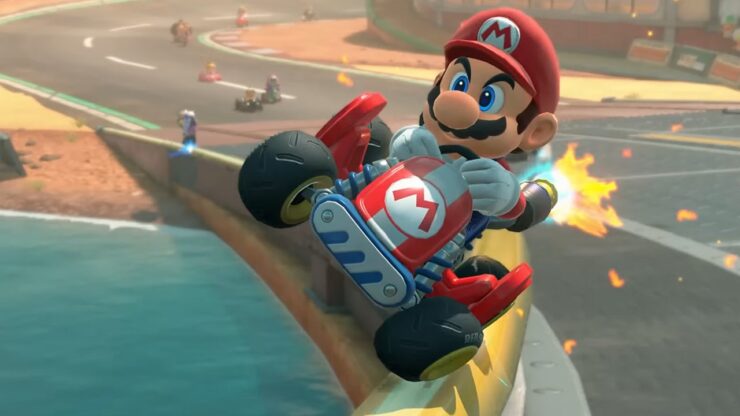With Mario Kart World cruising its way onto store shelves at $80, Nintendo fans who were otherwise stoked about the promise of the Nintendo Switch 2 have spent the last 24 hours balking at the prospect of doling out that many coins, even for a game they feel is a must-have.
We wrote earlier today about why Mario Kart World, as well as the Nintendo Switch 2 itself and many of its accessories, are so dang expensive. But knowing the “why” of it doesn’t really ease the pain on the wallet. What’s more, we learned just this morning that a number of Nintendo Switch 2 Edition games, including The Legend of Zelda: Tears of the Kingdom and Kirby and the Forgotten Land, will also be $80. And with the AAA game price increase from $60 to $70 still firmly within recent memory, fans are now worried that more and more games, Nintendo or otherwise, are going to start getting more and more and more expensive.
So what does the future hold? Are $80 games the new Nintendo normal?
As usual, rather than speculate ourselves, we went and found some expert analysts to tell us what they think is going to happen.
A New Nintendo Normal
NYU Stern professor and author of SuperJoost Playlist, Joost van Dreunen, believes Nintendo is using Mario Kart World as a “test case for premium pricing,” and will evaluate consumer response before applying this more broadly. Spoilers: the response hasn’t been great so far! But sentiment is not the same as sales, and Nintendo will likely measure success by how well Mario Kart World actually sells.
“If the $80 price point succeeds, Nintendo will likely extend it selectively to their most valuable franchises rather than making it standard across their first-party lineup. Franchises that could potentially justify the premium pricing include:
- The Legend of Zelda – the next mainline entry following Tears of the Kingdom could command $80 given the series’ prestige and the expansive scope these games typically offer.
- New 3D Mario adventures – for major releases in the vein of Super Mario Odyssey, Nintendo could position these as premium products.
- Super Smash Bros. – the next installment of this franchise would be a strong candidate for premium pricing due to its extensive roster and competitive staying power.
“Games that likely wouldn’t justify the premium price include smaller-scale entries, remasters, and series with more niche appeal. Nintendo will probably maintain a tiered pricing strategy, with their tent-pole franchises at $80, mid-tier releases at $60-70, and smaller titles at traditional price points.”
Rhys Elliott, games analyst at Alinea Analytics, had a similar take, pointing to the top 10 best-selling Nintendo Switch games as a guide for what we might see get an $80 price tag in the future. “I could see Nintendo pricing mainline Pokémon games, mainline Zelda games, and the inevitably imminent 3D Mario and Animal Crossing games at $80 physical (but $70 digital still).”
And James McWhirter, analyst at Omdia, added a suggested hypothetical Splatoon 4 to the list of possibilities, along with another thought on future monetization:
“For titles that do not adopt the $80 base price, Nintendo could lean in more heavily in alternative forms of monetisation, including those it has so far refrained from using, such as tying paid early access to higher value editions of its games.”
Grand Theft, Grand Price?
That covers Nintendo, but what about other games? Earlier this year, we covered a flurry of speculation on one specifically: Grand Theft Auto 6. At the time, we were responding to rumors and discussion that Take-Two might price the sequel to the over 200 million selling blockbuster at $80, $90, or even $100. Analysts suggested that the high end of this was rather unlikely, but what about now? Will Grand Theft Auto 6 cost $80… or even more?
Tiago Reis, market analyst at Newzoo, certainly thinks so. “For sure. Big hits that are highly anticipated (e.g., GTA 6, new CODs) can get away with it due to franchise recognition. Most people are not going to stop buying these games because they are $10 more expensive. If consumers are willing to wait, they can get it at a discount a couple of months after release. But by then, these companies have already extracted max value/price from the people who are less price sensitive.”
Reis’ colleague Lauren Universe, client services manager at Newzoo, added: “Frankly, I expect base GTA to be at least $80, with multiple options of various increased prices (like Civ 7) that include expansions, DLCs, and ‘early access.’”
Dr. Serkan Toto, CEO of Kantan Games, agreed, and even expanded on who might be interested in raising prices beyond just Take-Two. “I do believe there is a chance that companies like Microsoft or Sony could feel encouraged to raise their prices now. Would you be shocked if Take-Two now thought to themselves: ‘If Nintendo can charge $80 for a Mario Kart game, we can do the same for GTA 6 – a title thousands of people have been working on for 12 years?”
Nuno Domingues Marques, also a market analyst at Newzoo, similarly brought up Sony and Microsoft as possible candidates for price hikes. “I am unsure if Sony/Xbox will wait for their next generation to make the push or if they will adjust post-Switch launch, but certainly, it seems like the way forward. Third-party publishers will jump on it as soon as they feel it is justified, which is likely ASAP. Not all exclusive games will cost $80, in my opinion though. Games like Ratchet & Clank or other smaller niche experiences are likely to keep lower price points.”
But Elliott pushed back a bit on the idea that Mario Kart World could have opened a higher pricing floodgate. He pointed out that at least in the UK and Europe (U.S. price discrepancies are still unconfirmed), Nintendo is charging more for the physical edition of Mario Kart World than digital in an effort to push more consumers toward the digital edition. But he suspects that because the other two console platforms are far more digitally-oriented than Nintendo (something he discussed in more detail in our other piece on the Switch 2 pricing), this would be a tougher sell for other publishers.
“While I believe Take Two could charge over $70 for GTA 6, I maintain that it is a bad idea for three reasons. [One,] the real cash cow is GTA Online and its recurring revenues, so limiting the total addressable audience at launch wouldn’t be smart. There’s also a cost-of-living crisis happening globally and GTA appeals to everyone – rich and less fortunate.
“[Two,] Rockstar needs to move players from GTA 5, and a higher floor for the switching cost would limit the GTA 5-to-GTA 6 player acquisition. Players not budging from GTA 5 is probably one of GTA 6’s biggest threats, one GTA hasn’t really faced before. After all, live services are mostly zero-sum in today’s oversaturated attention economy. GTA 6 isn’t just competing against competitors’ games, it’s competing with TikTok, Netflix, and even its predecessor.
“[Three,] Rockstar can easily charge $100 or more for an edition of GTA 6 with a week of early access, maybe with a shark card thrown in. Players with disposable income will pay for it. This is the best of both worlds for Take-Two. This is pretty much the norm for AAA games these days.”
Elliott concluded that even with all that in mind, GTA 6 nonetheless stands a better chance than any other game at withstanding a price hike with its consumer base intact. So ultimately, the question of GTA 6’s pricing remains an impossible one to answer up to the point where Take-Two finally announces it.
Living in Interesting Times
I’ll end on a hopeful note, though, which I got from both Mat Piscatella, analyst at Circana, and a couple of analysts at Newzoo. These folks told me that while we’re likely to keep seeing games get more expensive (and, as Piscatella points out, have already been for a while via Collector’s Editions and similar), we may also see them get cheaper in certain ways.
“Other Nintendo games will certainly follow suit,” said Brett Hunt, market analyst at Newzoo. “It could, however, open the door for Nintendo to have an adjusted discounting strategy for the Switch 2.”
Marques agreed. “Maybe we will see a bigger window of pricing as well, as seen from the Donkey Kong game. Creation of space for multiple different-sized games; games that cost $49.99, $59.99, etc., having distinct content depth and breadth expectations. I agree that maybe a new discounting strategy is coming from Nintendo.”
And as Piscatella put it, Nintendo may not be the only company that sees the need to break with $70 convention in more than just one way. “We certainly could see other publishers try and establish even higher base prices for some of their new games. But we could also see more significant price promotion and discounting as well.
“With all of the uncertainty in the market, we’re at a point where both publishers and consumers will have to figure out where things go next. These are, after all, interesting times.”
Rebekah Valentine is a senior reporter for IGN. You can find her posting on BlueSky @duckvalentine.bsky.social. Got a story tip? Send it to rvalentine@ign.com.
Source link











Add comment